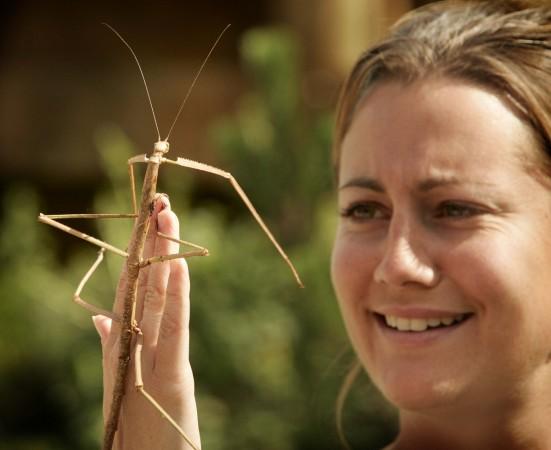
It's not just women who get turned on by appealing fragrance. A recent study in which researchers analysed stick insects found that they choose their mate only if they find their scent attractive along with looks.
Also Read: This family went out of their way to save their 20-year-old pet goldfish Bob!
The study revealed why insects still prefer mating with their own species despite looks being deceiving due to phenomenon like camouflage.
The scientists wanted to find out how the insects possess the knack to prevent their genes from getting mixed with that of other species, which is a crucial aspect to maintain differences in the breed. They also maintain and develop those characteristics which will aid their survival, which is better known as natural selection. It plays a major role in their existence.
The researchers found that a species of stick insects from genus Timema were resisting mating other species. Interestingly, they were found to identify mates from their own species despite their deceptive appearances.
"The paper combines what we know about the forces that contribute to the population changes of walking sticks," said co-author Cristina Sandoval, a biologist at UC Santa Barbara (UCSB) and director of Coal Oil Point Reserve, one of seven UC Natural Reserve System locations overseen by UCSB.
"These walking sticks use smell to choose their mates and they discriminate between different populations based on this chemical sex appeal," she added.
A variety of 11 species in over 100 populations of stick insects were analysed by the researchers over a span of almost two decades. They found that the stick insects chose their mate on the basis of a particular mixture of oily chemical compounds present in their body. This chemical played the role in making the stick insect more or less appealing.
Apart from deciding the attractiveness quotient and helping the species in choosing their partner, this oily chemical also protects the body of the insect from drying.
About 1,000 individual Timema genomes were sequenced by researchers. And with its help, they were able to compare the alterations taking place in their physical traits (like scent and colour patterns) and their DNA.
"We know from previous studies that a predator's discrimination on colour pattern selections contributes to the beginning of the changes in the DNA, but only on the specific gene that determines colour pattern," Sandoval explained.
"Changes in Timema sex appeal chemistry caused an even bigger chunk of the DNA to change, so that looks to be a more important trait for the formation of species in this genus," she concluded.
















